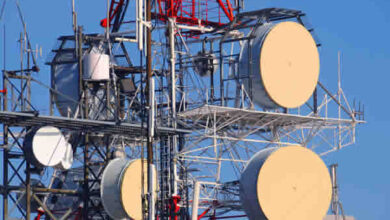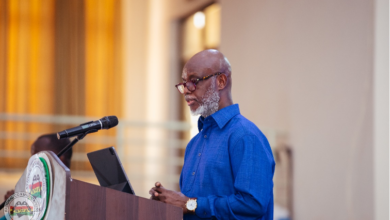FCC Reclassifies Broadband Internet Access Services as Telecoms

On May 7, 2024, the FCC released a Declaratory Ruling reclassifying “broadband Internet access service” (“BIAS”) as a “telecommunications service” subject to the jurisdiction of the FCC under Title II of the Communications Act. It was accompanied by an Order removing BIAS from most Title II regulations and a Report and Order applying a set of Open Internet rules to BIAS providers. (For clarity, the remainder of this blog will refer to the proceeding as the “Order.”)[1]
Mainstream press reports have focused primarily on the “net neutrality” part of the Order, and to be sure, the FCC’s desire to implement the Open Internet rules catalyzed the overall effort. This post, however, addresses other reasons why this re-re-reclassification[2] of broadband’s regulatory status is important for ISPs. (We will address the Open Internet rules and the future of this proceeding in subsequent posts.)
Ultimately, however, the Order is notable less for its immediate impact on ISPs than for the long-term structural change it represents. The Order – if it survives legal challenge – gives the FCC jurisdictional authority over the dominant communications medium of modern times.
Scope of Reclassification: “Broadband Internet Access Service.” The Order applies to “broadband Internet access service” (“BIAS”), defined as “a mass-market retail service by wire or radio that provides the capability to transmit data to and receive data from all or substantially all Internet endpoints, including any capabilities that are incidental to and enable the operation of the communications service, but excluding dial-up Internet access service.”[3]
BIAS includes “services provided over any technology platform, including but not limited to wire, terrestrial wireless (including fixed and mobile wireless services using licensed or unlicensed spectrum), and satellite.”[4]
The FCC also reinstated the classification of mobile BIAS as a commercial mobile service (i.e., within the scope of Title II), pursuant to Section 332(d)(1) of the Communications Act.[5]
BIAS does not include enterprise services,[6] and does not include private end-user networks, coffee shops, bookstores, airlines, and other businesses that acquire BIAS to provide service to patrons.[7] The Order also described a category of “non-BIAS services,” defined as “certain services offered by BIAS providers that share capacity with [BIAS] serviced over BIAS providers’ last-mile facilities,” but that is not BIAS.[8]
Providers of BIAS are directly affected by the Order in a variety of ways, as the remainder of this post describes further.
Access to Poles, Ducts, and Rights-of-Way: Section 224. The Order applies Section 224 of the Communications Act to BIAS providers, thus “ensur[ing] that BIAS-only providers receive the same statutory protections for pole attachments guaranteed by section 224 of the Act that providers of cable and telecommunications services receive, thereby promoting greater deployment, competition, and availability of BIAS. … BIAS-only providers will be statutorily guaranteed a right of non-discriminatory access and will also be entitled by statute to the same rates as their competitors.”[9] This includes access to poles owned by investor-owned utilities and ILECs in the 27 states with FCC jurisdiction, and likely in most of the other “non-FCC” states.
Access to Public Rights-of-Way: Section 253. The Order applies Section 253 of the Communications Act to BIAS providers. Section 253 provides that “no [s]tate or local statute or regulation, or other [s]tate or local legal requirement, may prohibit or have the effect of prohibiting the ability of any entity to provide any interstate or intrastate telecommunications service.”[10] Among other rights, Section 253 provides BIAS providers with non-discriminatory and competitively neutral access to the public rights-of-way.
MTE Access. The Order notes that Section 201 of the Act enables the FCC to regulate BIAS-only providers that serve MTEs, “and thereby end unfair, unreasonable, and anticompetitive practices facing MTE residents….”[11] The Order empowers the FCC to apply to BIAS providers the same prohibitions against exclusive MTE contracts that currently apply to telecommunications carriers: “[W]e do not forbear from section 64.2500 of our rules as to BIAS providers, which prohibits common carriers from entering into certain types of agreements [e.g., exclusive access, graduated revenue sharing, and exclusive revenue sharing agreements] and requires disclosure of others [e.g., exclusive marketing agreements]. BIAS-only providers should, therefore, ensure that all MTE-related contracts entered into subsequent to the effective date of the Declaratory Ruling we adopt today are in compliance with section 64.2500. With respect to pre-existing MTE-related contracts, we temporarily waive section 64.2500 with respect to these contracts for BIAS-only providers for a period of 180 days.”[12]
Universal Service Fund Reform. The Order generally applies the Section 254 universal service framework to BIAS,[13] but the FCC forbears – for now – from applying rules promulgated under 47 U.S.C. § 254(d) that would require federal Universal Service Fund contributions by ISPs: “[W]e believe that any decisions on whether and how to make BIAS providers contribute to USF funding are best addressed holistically in [] ongoing discussions of USF contribution reform, on a full record and with robust input from all interested parties, than in this proceeding.”[14]
ETC Designation for BIAS Providers: High Cost and Lifeline Support. The FCC’s USF High Cost and Lifeline support programs are limited to common carrier providers of telecommunications services that are designated as Eligible Telecommunications Carriers (“ETC”) pursuant to State utility commission standards (or the FCC, in certain circumstances). Prior to the Order, only carriers offering voice telephony service could be designated as an ETC. The Order enables BIAS providers to be designated as ETCs without a voice service requirement, allowing BIAS providers to be theoretically eligible for support under the High Cost and Lifeline programs. However, the Order stops short of designating BIAS as a “supported service” under the USF: “Rather than adjust our USF rules on a piecemeal basis, retaining existing supported universal services and, by extension, ETC eligibility standards, provides us the flexibility for holistically examining reclassification’s effects on the USF at a later time. For this reason, we decline at this time to revise our definition of supported services.”[15]
CPNI/Privacy. The FCC does not forbear from applying the Section 222 CPNI rules to BIAS providers, but waives the rules “to the extent such rules are applicable to BIAS as telecommunications service” by virtue of the Order.[16] The challenge facing the FCC is that the CPNI rules are heavily voice-specific and not readily applied in the BIAS context. The Order indicates that the FCC will launch a proceeding in the near future to modify the CPNI rules for application to BIAS. Given the ongoing State and federal debate surrounding ISP privacy issues, this promises to be a complicated and hotly contested rulemaking.
State and Local Preemption. Given the federal reclassification, can State utility commissions opt to require BIAS providers to obtain state certification as a telecommunications carrier, and be subject to State telecommunications regulations? The Order does not provide useful guidance on this. The FCC declined “to categorically preempt all state or local regulation affecting broadband in the absence of any specific determination that such regulation interferes with our exercise of federal regulatory authority…. While the Commission has occasionally described the Internet as ‘jurisdictionally interstate’ or ‘predominantly interstate, we cannot find it to be exclusively interstate”[17] (emphasis in original). In essence, the FCC intends to consider state and local preemption issues on a case-by-case basis.
Nevertheless, the final version of the Order did specifically address the question of whether a State can impose its own universal service program contribution obligations on BIAS providers. In keeping with the FCC’s forbearance from requiring BIAS providers to contribute to the federal Universal Service Fund, Footnote 1,476 provides, “we maintain the status quo with respect to states’ ability to impose state-level contribution obligations on the provision of BIAS for state universal service programs.”[18]
Network Slicing. The concept of network slicing came to the forefront relatively late in the reclassification debate and could be extremely important as the Order is implemented. The Order defines network slicing as “a technique that enables mobile network operators (MNOs) to create multiple virtualized subnetworks (each known as a ‘slice’) using shared physical wireless network infrastructure and common computing resources. Network slicing is often described as a ‘logical’ segmentation of the network.” The debate involved questions of whether network slicing presented an Open Internet problem, and whether it should be classified as a BIAS or non-BIAS service.
In the Order, the FCC took a cautious approach: “Given the nascent nature of network slicing, we conclude that it is not appropriate at this time to make a categorical determination regarding all network slicing and the services delivered through the use of network slicing. We agree … that we ‘should not allow network slicing to be used to evade [the] Open Internet rules’ that we adopt.”[19]
Despite the agnosticism on network slicing, the FCC added a potentially relevant clarification in the final version of the Order in its discussion of “throttling”: “We clarify that a BIAS provider’s decision to speed up ‘on the basis of Internet content, applications, or services’ would ‘impair or degrade’ other content, applications, or services which are not given the same treatment.”[20] A “fast lane,” in other words, may present an Open Internet violation.
While the network slicing debate has tended to focus on mobile network operators, and the Order’s definition of the term “network slicing” is limited to mobile network operators, similar issues could conceivably apply to wireline services as well at some point. Indeed, the National Cable and Telecommunications Association submitted ex parte comments suggesting that NCTA does not explicitly oppose the mobile carriers’ push to allow network slicing, but rather seeks to ensure that wireline providers would receive comparable treatment.[21]
No Rate Regulation. The Order explicitly forbears from applying sections 201 and 202 of the Act to BIAS to the extent they would permit rate regulation by the FCC.[22] While some commentators continue to insist that the Order is a stalking horse for ISP rate regulation, the FCC made clear statements in the Order indicating that rate regulation is not an objective, and the Order does not allow it.
Whether the Order acts to preempt State affordability programs (to the extent such programs are considered “rate regulation”) is an open question.
Not “Public Utility” Regulation. Despite bringing BIAS into the same regulatory fold as telephone service, the FCC maintained that the Order is not analogous to public-utility regulation:
“First, unlike utilities such as water, electricity and gas, BIAS is a two-sided platform with broadband customers on one side of the market and edge providers on the other; therefore, the type of regulation required and the effects of those regulations will be different for BIAS than it would be for such utilities. Second, and most importantly, the rules we now adopt are carefully tailored to avoid the potential issues that commenters claim are problematic in the regulations of utilities. In particular, unlike the range of utility-style regulations that were applied to monopoly telephone service under Title II, including rate regulation, we forbear from many of these provisions and do not adopt any rate regulation, which is a hallmark of utility regulation.”[23]
The next post will cover the Report and Order implementing the new Open Internet rules, including the “bright line” rules (no blocking, no throttling, and no paid or affiliated prioritization arrangements), the “general conduct” rules, what constitutes “reasonable network management,” and the transparency rule.
[1] In the Matter of Safeguarding and Securing the Open Internet, WC Docket Nos. 23-320, 17-108, Declaratory Ruling, Order, Report and Order, and Order on Reconsideration, FCC 24-52, rel. May 7, 2024 (“Order”).
[2] See Protecting and Promoting the Open Internet, GN Docket No. 14-28, Report and Order on Remand, Declaratory Ruling, and Order, 30 FCC Rcd 5601, 5603, para. 4 (2015) (“2015 Open Internet Order”), pet. for review denied, U.S. Telecom Ass’n v. FCC, 825 F.3d 674 (D.C. Cir. 2016); Restoring Internet Freedom, WC Docket No. 17-108, Declaratory Ruling, Report and Order, and Order, 33 FCC Rcd 311 (2017).
[3] The definition of BIAS continues: “This term also encompasses any service that the Commission finds to be providing a functional equivalent of the service described in the previous sentence or that is used to evade the protections set forth in this part.” 47 CFR § 8.1(b).
[4] Order, at ¶ 190.
[5] Order, at ¶ 25.
[6] Order, at ¶ 192.
[7] Order, at ¶ 210.
[8] The FCC has previously identified non-BIAS services as including facilities-based VoIP and IP-video offerings, connectivity bundled with e-readers, heart monitors, energy consumption sensors, and services that provide schools with curriculum-approved applications and content. Id.fn.814 citing 2015 Open Internet Order.
[9] Order, at ¶ 361.
[10] 47 U.S.C. § 253.
[11] Order, at ¶ 83.
[12] Order, at ¶ 326.
[13] Order, at ¶ 363.
[14] Order, at ¶ 366.
[15] Order, at ¶ 101.
[16] Order, at ¶ 639.
[17] Order, at ¶ 268.
[18] Order, at ¶ 364 n.1476.
[19] Order, at ¶ 203.
[20] Order, at ¶ 499.
[21] NCTA ex parte filed March 24, 2024.
[22] Order, at ¶ 323.
[23] Order, at ¶ 281.



